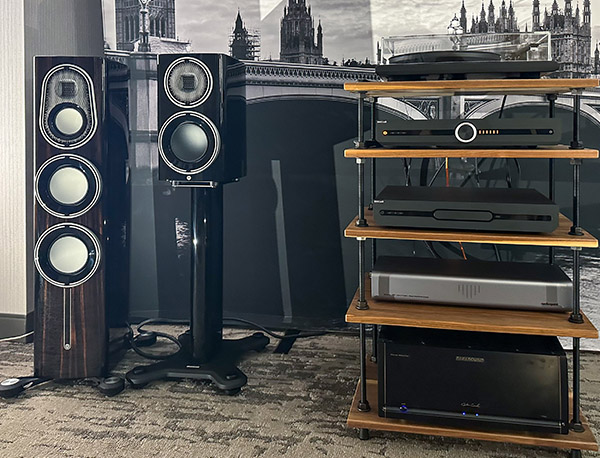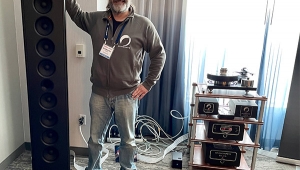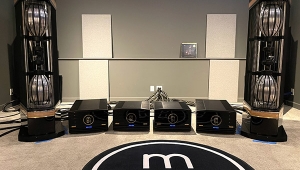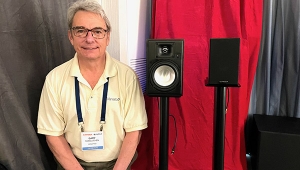| Columns Retired Columns & Blogs |
Monitor Audio Platinum 200 3G speakers, Roksan, Parasound, AudioQuest

Last summer, when I went shopping for a pair of standmount speakers for a bedroom, I settled on Monitor Audio Bronze 100s. They ticked the boxes: musical to a T, natural-sounding, not too incisive or fatiguing, and a pretty damn good value at around $700/pair. I dug 'em, and still do.
At AXPONA, the British company demonstrated what happened when it gave its designers license to develop a top-of-the-line floorstander. Fifty years of both incremental improvements and great leaps forward have culminated in the $13,900/pair Monitor Audio 200 3G. I'd opt for the piano ebony finish: fetching. Visually, the speakers, which sport silver trim and outriggers, strike an ideal balance between blingy and understated.

A 41"-tall tower (measured with spikes installed), the 200 3G is a three-way design with dual 6" bass drivers. The size of the woofers and the volume of the cabinet don't portend record-breaking low-frequency extension. Should your tastes run to EDM, dub and reggae, or church-organ recitals, a subwoofer may be in order. Monitor's own Gold W12 ($4000), which reproduces bass to the edge of human hearing, would be a sweet partner for the 32Hz-rated 200 3G. If subwoofers aren't your thing, you can always move the rear-ported speakers closer to the wall for deeper bass (as low as 23Hz in-room, the Monitor folks say).
The new 200 is crossed over from mids to highs at a not-unusual 3kHz, and from bass to mids at a surprisingly elevated 825Hz. The midrange drivers, 4" affairs that benefit from Monitor's Rigid Diaphragm technology (RDT), are claimed to work "like a perfect piston," with the lowest distortion specs in the company's history. Up top, Monitor's third-generation micro-pleated diaphragms (MPD IIIs) are intended to provide equal directivity horizontally and vertically, resulting in airy treble, very good dispersion, and an impressively wide soundstage.
Via the Monitor Platinum 200 3Gs, Yello's "The Expert" and Dominique Fils-Aimée's ubiquitous "Birds" sounded exceptionally clean and well-controlled, with class-leading articulation.
The system in the Saturday Audio Exchange dealer room further consisted of a John-Curl-designed Parasound Halo JC5 dual-mono power amplifier ($6499), a Roksan Attessa streaming amp ($3400), an Attessa turntable ($1800), an AudioQuest Niagara 1200 power conditioner ($1595), and AudioQuest cabling.
- Log in or register to post comments




































